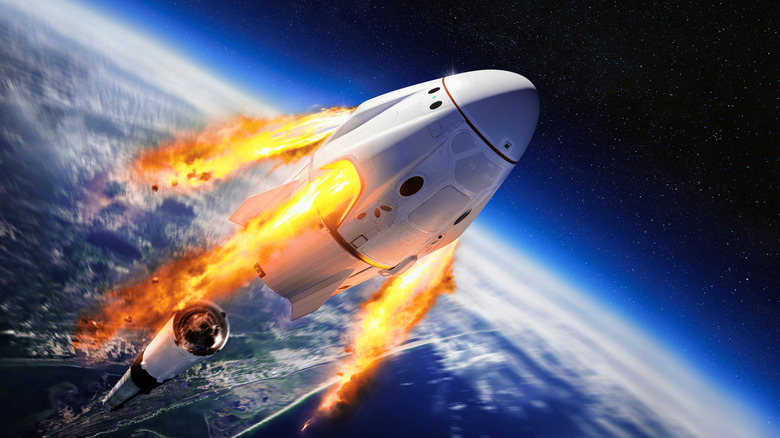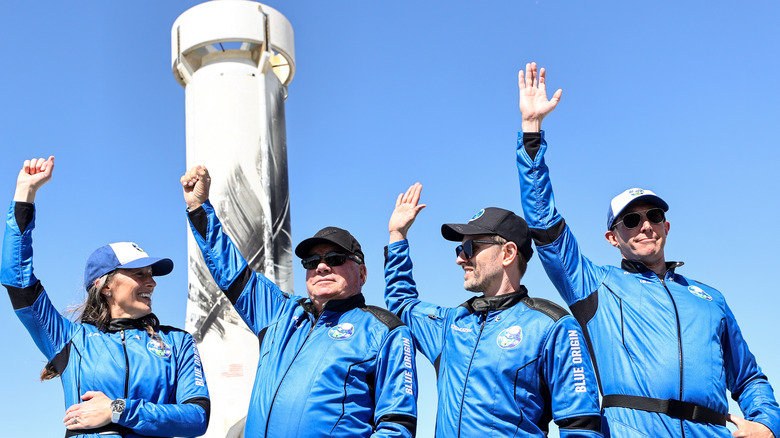How Much Does It Cost To Send A Rocket To Space?
On October 13, actor William Shatner ("Star Trek"), 90 years old, became the oldest person to go to space. His voyage came months after the previous record holder, 82-year-old former NASA hopeful Wally Funk, went up in one of Jeff Bezos' Blue Origin rockets (via USA Today). These recent launches seem to reflect a reality that has been developing for decades in NASA and Soviet/post-Soviet Russia: Multi-stage rockets are usually cheaper and less complex than reusable spaceplanes. After all, since 2011 it has usually been Russian rockets that brought Americans to the ISS after the retirement of the more expensive Space Shuttle program (via Fox Business).
While individuals such as Richard Branson have made great strides in reviving reusable spacecraft, and many concepts for spaceplanes have been under evaluation by different agencies, their use has not been seen as a sound investment so far by national governments (via BBC). With that being said, in the new age of private spaceflight, how much does it cost to get these supposedly cheaper rockets into orbit? For starters, the operational cost of SpaceX's Dragon 2 was around $400 million when it brought astronauts to the ISS, the first private venture to do so (via CNBC).
While still expensive, new technology will make rockets significantly cheaper
At first this may come across as only a marginally lower price, given the average launch of a Space Shuttle was around $450 million (per NASA). Yet craft capable of unmanned launches like Dragon 2 drop dramatically in launch price when carrying out such flights, as the small crew capsule can be replaced entirely with different cargo. The Shuttle, on the other hand, required a crew, and thus always needed proportionally more fuel for the extra weight of both passengers and an integral cabin with life support. It also dropped its booster rockets and $75 million fuel tank in flight, the latter of which could not be reused (via Los Angeles Times).
Granted the Soviet Buran Shuttle was capable of unmanned flight, but it was still vastly more expensive than its rocket competitors. Europe's currently unmanned Ariane 5, for instance, has a launch cost of $175 million, while future models may be as low as $77-$126 million (via The Motley Fool). While they are conversely not projected to have manned versions, SpaceX's Falcon 9 and Falcon Heavy beat out even those models, at $62 million and $90 million, respectively. What is even more astounding, though, is the latter company's goal of creating a manned rocket that is 100% reusable, with no disposable elements. A divergence from both multi-stage rockets and the Space Shuttle, the "Starship" is hoped to have an operational cost of only $1 million by the time it is considered ready for Mars (via Nasdaq).

